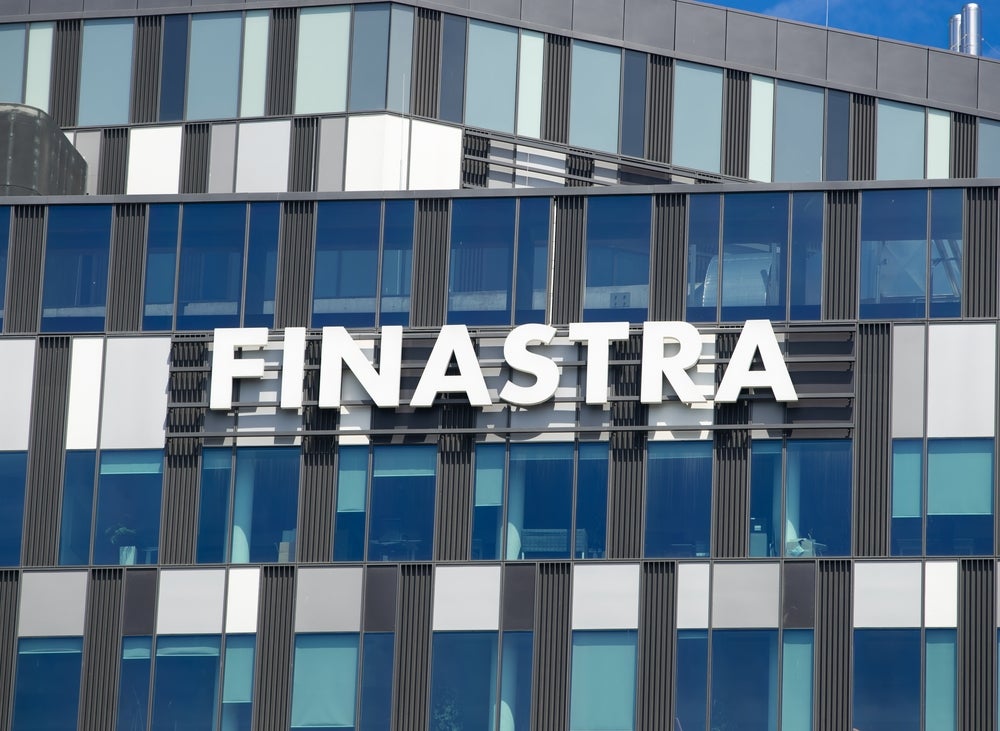Mobile app banking is the fastest growing digital channel at First National Bank (FNB), South Africa’s oldest bank. The bank has won top ratings for its online and mobile banking platforms, but how is it taking advantage of its new digital focus? Robin Arnfield reports on the bank’s technological progress
Sahil Mungar, Head of Marketing for FNB Digital Banking, says:"FNB’s mobile banking app and cellphone banking service were ranked as the best in South Africa in the South African Consumer Site Satisfaction Index 2015."
"Also, FNB Online Banking (FNB.co.za) was ranked number one by South Africa’s Columinate Internet Banking SITEisfaction Survey 2015.
"FNB’s banking app was ranked fourth best globally in the MyPrivateBanking Report, Mobile Apps for Wealth Management 2015, and sixth best globally by the UX (user experience) Alliance in March 2015," Mungar adds.
Launched in July 2011, the FNB Banking App is now used on over 1.5 million active mobile devices.
"FNB Banking App is our fastest growing digital channel," says Mungar.
How well do you really know your competitors?
Access the most comprehensive Company Profiles on the market, powered by GlobalData. Save hours of research. Gain competitive edge.

Thank you!
Your download email will arrive shortly
Not ready to buy yet? Download a free sample
We are confident about the unique quality of our Company Profiles. However, we want you to make the most beneficial decision for your business, so we offer a free sample that you can download by submitting the below form
By GlobalData"It’s also the most downloaded app in the financial vertical across South Africa’s app stores. We don’t break down user numbers into smartphones and tablets, but, reflecting the fact that tablet ownership in South Africa is lower than smartphone ownership, we have fewer tablet users than smartphone users."
FNB’s smartphone app is natively available for iOS, Android, Windows Mobile and Blackberry platforms.
"Our tablet app is available on iOS, Android and Windows, and includes Business Banking features enabling enterprise banking features such as dual-authorisation, collections, and payments," Mungar says.
According to an FNB press release, the most popular transactions on the FNB Banking App are payments, account transfers and prepaid products.
Other transaction types that are popular with FNB Banking App users are Send Money, iTunes gift codes, and card services such as cancellations, upgrades and ordering new cards.
FNB Connect
Since 2011, FNB has sold 285,000 discounted smartphones and tablets to the bank’s customers, and also offers broadband ADSL and 3G Internet packages. Around two million customers use FNB’s digital channels to top-up airtime or electricity each month.
In June 2015, FNB launched the FNB Connect mobile voice and data service, offering FNB-branded SIM cards to customers along with prepaid, contract, and top-up airtime deals. FNB said it is the first bank in South Africa to sell SIM cards.
According to South African press reports, FNB is using South African mobile operator Cell C as its partner for FNB Connect.
FNB said that integrating its FNB Connect service with its digital platforms such as Online Banking gives customers the benefit of a single login to simultaneously manage their financial and mobile accounts.
Enhancements
"Last year, we decided to enhance the Banking App across all device types with a new look and feel, and improved usability," Mungar says.
"Our goal is to improve the banking experience across all our digital platforms, for example by reducing the number of clicks and developing innovative solutions.
"We’re seeing that digital banking is becoming a preferred banking channel for many customers, and that they are finding fewer reasons to use traditional banking channels."
FNB’s Online Banking service has over 1.5 million active users. "Customers can now download and link the FNB Banking App to their devices without having to have an existing Online Banking profile," says Mungar.
"This improves customers’ ability to get started with app banking immediately."
FNB allows customers to open new accounts and switch their banking to FNB using its Banking App and Online Banking service.
"The digital account-opening process takes under 10 minutes, at the end of which you’re given an account number," says Mungar. "You then wait a few days for your card to be delivered by a courier, who will carry out KYC verification on your doorstep."
Mungar says that all FNB’s channels, including cellphones, online banking and the banking app, provide account management services, as well as personalised cross-sell capabilities offering existing customers account upgrades, limit increases, investments and credit products.
Because these offers are pre-approved, customers have the ability to sign up immediately for them via the channel they are using, he says.
Cellphone banking
The South African banking market is divided between affluent customers who are very tech-savvy and primarily use digital channels, and low-income customers who have limited access to technology.
"These low-income consumers tend to use traditional channels and rely on cash in their day-to-day activities," says Mungar.
FNB provides a Cellphone Banking service, which uses USSD (Unstructured Supplementary Service Data), a GSM protocol enabling cellphones to communicate with a service provider’s computers, for lower-income consumers.
The service offers basic transactional capabilities such as balance checks, prepaid airtime, data and electricity, and eWallets which enable users to send money to any other cellphone.
"Our cellphone banking service is popular with low-income customers, with over 2.5 million active users," says Mungar.
"Our eWallet mobile money service gets a lot of usage, due to the many migrant workers in South Africa who need to send money home to relatives."
According to FNB, its eWallet service, which is also available on the FNB Banking App, saw a 95 percent growth in transaction volume between May 2013 and April 2014.
In addition to P2P transfers, eWallet-holders can buy prepaid airtime, data and electricity, pay bills and make purchases at selected retailers.
Since 2014, FNB has offered money transfer services from South Africa to Zimbabwe and to Mozambique via Western Union for users of its Banking App, online banking and cellphone banking services.
Money can be collected at selected OK Ltd stores in Zimbabwe or at one of the 15 FNB branches in Mozambique.
Last year, FNB launched the Global Payments services which allows mobile app and online banking users to send and receive SWIFT payments to and from anywhere in the world.
Cardless cash withdrawals
In June 2015, FNB launched a cardless cash withdrawal service enabling Banking App users to withdraw cash from any FNB ATM using their smartphone.
Users pre-stage the withdrawal on their smartphone, select cardless services on the ATM, and enter their mobile number.
They then receive a one-time PIN which is valid for 30 minutes.
FNB launched its cellphone-based cardless cash withdrawal service, which uses USSD, in 2011.
"So far, over R2 billion ($160 million) has been withdrawn from our ATMs via cellphone," Mungar says.
"Our initial prediction is that the cardless cash withdrawal app will be even more popular than the cellphone-based service due to its intuitive user interface, much quicker process, and the ubiquity of smartphones.
"We’re getting a lot of repeat users of the cardless ATM withdrawal app. People are using the service as they don’t want to carry cards."
ATMs
FNB has over 2,000 ATMs in South Africa. Its ATMs range from ATM Advance terminals which offer a full range of services, including cash deposits, to mid-tier ATMs that dispense cash and offer account management services, and touchscreen-based Slimline self-service terminals.
"Slimline terminals offer bank account management facilities, but don’t dispense cash," says Mungar.
"They can dispense vouchers which customers use to withdraw cash from a point-of-sale terminal, and are usually placed in convenience stores."
According to a news release, FNB’s Slimline terminals saw a 30 percent increase in transaction volumes between July 2014 and April 2015.
First introduced in 2013, there are now 1,305 Slimline terminals in South Africa, which includes terminals at remote locations across the country.
dotFNB
FNB opened its first dotFNB cashless and paperless branch in 2012, and has opened a further eight dotFNB branches around the country.
The branches provides an environment in which staff can help FNB customers migrate to the bank’s digital channels – App Banking, cellphone banking and online banking – and show them how to use these channels.
They offer deposit-taking ATMs, interactive financial planning Microsoft Surface tablets, and videoconferencing cubicles for interviews with remote subject specialists.
Customers can open FNB accounts at the dotFNB branches and purchase smartphones and tablets which are bundled with the accounts.
"The dotFNB store creates a balance between what we believe to be the future of banking and the need for human interaction," Kim Gibson-van der Walt, Head of dotFNB, FNB Banking Channels, said in a news release.
He added: "Sales and service pods are designed in such a way that customers sit alongside the bankers, sharing the experience of discussing their banking portfolio, choosing a device and setting it up with the FNB digital channels."
Sensor technology
In February 2014, FNB introduced interactive gesture technology at its flagship Canal Walk dotFNB store.
The motion sensor technology recognises the movement of shoppers who pass by the store front, prompts advertising messaging, and allows people who choose to interact with the screen to view FNB banking products and services.
Customers can select a cheque account and a bundled tablet or smartphone on the spot by gesture browsing through a catalogue of the products available.
Once the customer has selected the bundle of choice, a one-time code is displayed on the screen that the customer sends via SMS to FNB.
The customer will then be called by a consultant within 24 hours to finalise the application process and ensure that the new account and smart device deal is active.







